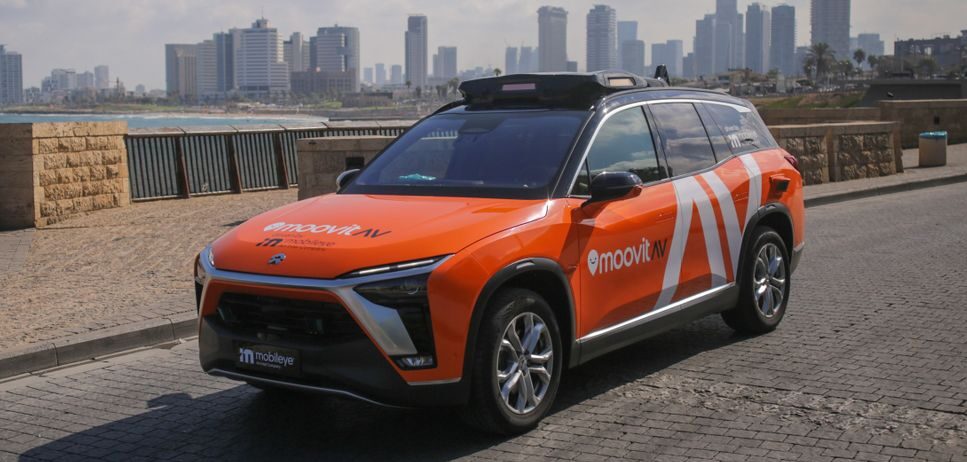Intel’s Mobileye operation has unveiled a six-passenger, road-ready electric autonomous vehicle (AV) that will be used for commercial driverless ride-hailing services in Tel Aviv and Munich, starting in 2022, operating under the Moovit (which Intel acquired in 2020) and Sixt brands.
Mobileye says the AV was designed from the ground up to scale both economically and geographically while addressing the essential attributes of efficiency, accessibility and safety. It is the first AV to employ all features of the Mobileye trinity, including the True Redundancy sensing solution with cameras, radar and lidar sensors, Mobileye’s crowd-sourced Roadbook AV map, and Responsibility-Sensitive Safety (RSS) driving policy.
Currently, Mobileye is collaborating with supplier Veoneer on the platform’s Lidar sensors, but is targeting production of its own SoC (System on Chip) frequency modulation continuous-wave (FMCW) Lidar by 2025, which would provide additional velocity information not currently available with time-of-flight based systems. The company’s approach is to use a two-layer sensor setup, with vision based systems operating independently of Lidar and radar sensors, hence the True Redundancy moniker. According to the company, the vehicle shown here utilizes eleven cameras and an array of both Lidar and radar sensors, with data fed back to the in-house developed AVKIT58 compute system, which incorporates eight of its EyeQ 5 SoCs, for processing.
The company notes that the system can be used in a variety of vehicle types for the movement of goods and people, making it perhaps the most versatile self-driving solution available today. These multiple application options are also highlighted by Mobileye’s plans to collaborate with Schaeffler on a self-driving chassis that can be used in building autonomous shuttles.
In addition to using its in-house MaaS provider Moovit, Mobileye has also formed a partnership with Sixt on the long term integration of robotaxis into the latter’s ‘One’ platform, which combines products for ride hailing as well as car rental, car sharing and car subscriptions into a single app. Following recent German law changes to allow early rider tests of Mobileye vehicles, the first pilot robotaxi service is due to operate in Munich, ahead of a hoped for nationwide expansion.
“Germany has shown global leadership toward a future of autonomous mobility by expediting crucial AV legislation,” said Intel CEO Pat Gelsinger. “Our ability to begin robotaxi operations in Munich next year would not be possible without this new law.
Speaking at IAA (Munich) Mobility,Gelsinger also predicted that, thanks in part to the rise of AVs, semiconductors will account for more than 20% of the total premium vehicle bill of materials (BOM) by 2030. This represents a five-fold increase on 2019’s 4% figure and comes amid increasing demand for semiconductors generally.
In his first in-person keynote since taking the helm of the company in February, Gelsinger predicted the total addressable market (TAM) for automotive semiconductors will nearly double by the end of the decade to US$115bn, accounting for more than 11% of the entire silicon TAM. This trend is being driven by what Gelsinger called “the digitization of everything” and four superpowers – ubiquitous compute, pervasive connectivity, cloud-to-edge infrastructure and AI – that are permeating the automotive and mobility industries, and are set to only grow further with a move toward greater adoption of autonomous driving and ADAS.
Intel fellow and Mobileye VP of Automotive Standards Jack Weast also welcomed the recently completed draft of IEEE 2846. Expected to be an approved standard by the end of the year, IEEE 2846 will be the first AV safety standard to address the question, ‘How safe is safe enough?’ Weast explained that IEEE 2846 formalizes the reasonably foreseeable assumptions humans make every day and that AVs need to make in order to balance risk and usefulness. “IEEE 2846 will give regulators the essential tool they need to welcome AVs to roads everywhere,” said Weast.


